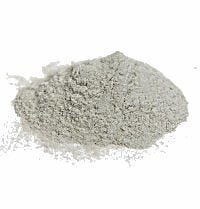Pumice Blast Media: A Comprehensive Guide
- September 3, 2024
- Posted by: Keith Gabbard
- Category: Abrasive Knowledge
 Pumice, a naturally occurring volcanic rock, has long been valued for its lightweight and abrasive properties. It is formed when volcanic lava with a high gas content cools rapidly, trapping air bubbles inside. This process gives pumice its unique characteristics: a porous, sponge-like texture that is both abrasive and lightweight. These features make pumice ideal for a variety of industrial and personal applications, particularly as a blast media.
Pumice, a naturally occurring volcanic rock, has long been valued for its lightweight and abrasive properties. It is formed when volcanic lava with a high gas content cools rapidly, trapping air bubbles inside. This process gives pumice its unique characteristics: a porous, sponge-like texture that is both abrasive and lightweight. These features make pumice ideal for a variety of industrial and personal applications, particularly as a blast media.
What is Pumice Blast Media?
Pumice blast media is a type of abrasive material used in sandblasting, a process that cleans, polishes, or prepares surfaces by blasting them with a high-velocity stream of abrasive particles. Pumice is prized for its gentle yet effective abrasive action, which makes it suitable for cleaning delicate surfaces without causing significant damage.
Pumice blast media is available in various grades, from coarse to fine, allowing for a range of applications. It is commonly used in industries like automotive, aerospace, and construction, where maintaining the integrity of the surface being treated is crucial.
Applications of Pumice Blast Media
- Surface Cleaning and Preparation:
Pumice is widely used for cleaning and preparing surfaces before painting, coating, or bonding. Its gentle abrasive action removes contaminants like rust, paint, and scale without damaging the underlying material. This is particularly useful in industries where maintaining precise tolerances and surface profiles is essential, such as in aerospace or automotive applications.
- Glass Etching:
Pumice is an excellent choice for glass etching, as it can create intricate designs without chipping or cracking the glass. The fine particles allow for detailed work, making pumice a preferred media for decorative glass products.
- Wood and Stone Restoration:
In restoration projects, pumice is often used to clean and polish wood and stone surfaces. Its mild abrasive properties remove years of grime and oxidation without stripping away the material’s natural patina. This makes it a popular choice for restoring antique furniture, monuments, and other historical artifacts.
- Industrial Cleaning:
In heavy industries, pumice blast media is used for cleaning machinery and equipment. Its ability to remove tough contaminants like grease, oil, and carbon deposits without damaging sensitive components makes it an invaluable tool for maintaining industrial equipment.
- Cosmetic Applications:
Pumice is used in the beauty industry, particularly in exfoliating products. Finely ground pumice is added to soaps, scrubs, and other skincare products to remove dead skin cells and smooth rough areas like elbows and heels.
Pros of Pumice Blast Media
- Environmentally Friendly:
Pumice is a natural, non-toxic material that does not release harmful chemicals or pollutants during the blasting process. Unlike some synthetic abrasives, pumice is biodegradable and does not contribute to environmental degradation.
- Cost-Effective:
Pumice is relatively inexpensive compared to other blast media like aluminum oxide or silicon carbide. Its availability and ease of processing make it a cost-effective choice for many industrial applications.
- Gentle on Surfaces:
The natural abrasiveness of pumice is less aggressive than many other blast media, making it ideal for delicate surfaces. It can clean and prepare surfaces without causing warping, pitting, or other damage, which is especially important in industries where maintaining the integrity of the material is crucial.
- Versatility:
Pumice blast media is available in a wide range of particle sizes, allowing for precise control over the blasting process. This versatility makes it suitable for a variety of applications, from heavy-duty cleaning to fine detailing work.
- Reusable:
Pumice can often be reused multiple times, depending on the application. This reduces waste and further contributes to its cost-effectiveness.
- Low Dust Production:
Compared to other abrasive media, pumice produces relatively low levels of dust during the blasting process. This improves visibility and reduces the risk of inhaling harmful particles, making it safer for operators.
Cons of Pumice Blast Media
- Lower Durability:
Pumice is a softer material compared to synthetic abrasives, which means it may break down more quickly during use.
- Not Suitable for All Materials:
Pumice may not be suitable for certain materials, particularly very hard surfaces like some metals or ceramics.
Pumice blast media offers a unique combination of gentleness and effectiveness, making it a valuable tool for a wide range of applications. Its natural, non-toxic properties, coupled with its cost-effectiveness and versatility, make it an attractive option for industries that require careful surface preparation and cleaning.
Overall, pumice blast media remains a popular choice for many industries due to its unique properties and wide range of applications. Whether you’re looking to clean, polish, or restore, pumice offers a natural and effective solution that balances performance with environmental responsibility.
